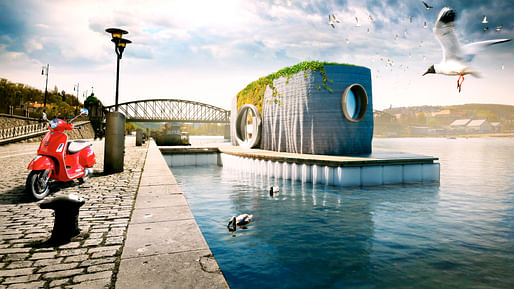

Around the world, private companies and public institutions alike are racing to present "first-of-its-kind" 3D-printed buildings, even entire villages.
In the Czech Republic, a developing company in collaboration with sculptor Michal Trpak is preparing to build, what it calls, the country's first 3D-printed inhabitable house this June.
Called Prvok (Protozoon), the project's building process is promoted as significantly cutting construction time, material waste, carbon emissions, and overall cost when compared to the region's conventional brick buildings.
"Prvok od Burinky (Protozoon) will have three rooms — a bathroom with toilet, living room with a kitchen and a bedroom," explains the project announcement. "The building will be anchored on a pontoon and is a year-round livable house."
"The house offers eco technologies such as recuperation, recirculation shower, remote control, green roof, as well as reservoirs for drinking, utility and sewage water."
Printing the 43 sqm / 463 sq ft structure is expected to take 48 hours, while the overall construction should be completed within two months.
"The robot itself is a Czech innovation from the workshop of Trpak's other initiative Scoolpt. A young architect and programmer Jiri Vele programmed an automotive robot for 3D printing concrete."
"Scoolpt, in collaboration with Master Builders Solutions (BASF), developed a new concrete mixture for printing that is enriched with nano-polypropylene fibers, plasticizers that improve plasticity and produce better organic shapes, and a setting accelerator. This type of concrete hardens after 24 hours to standard firmness of the foundations of a classic family house (i.e. 25 MPa). After total hardening in 28 days, the concrete acquires the values (65 MPa) — the same as in bridges."
No Comments
Block this user
Are you sure you want to block this user and hide all related comments throughout the site?
Archinect
This is your first comment on Archinect. Your comment will be visible once approved.